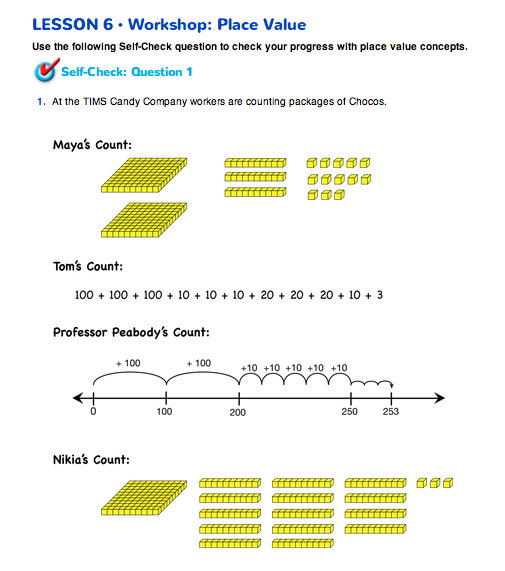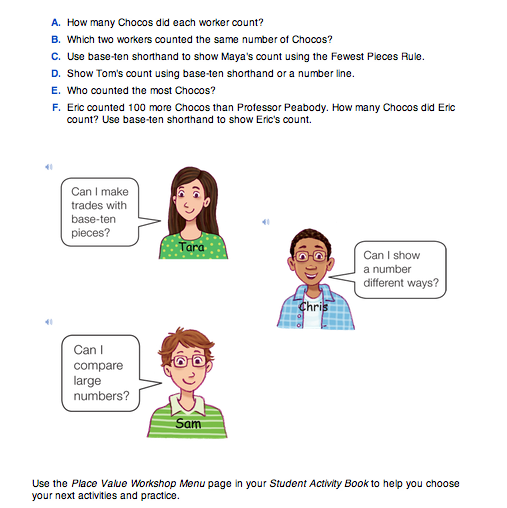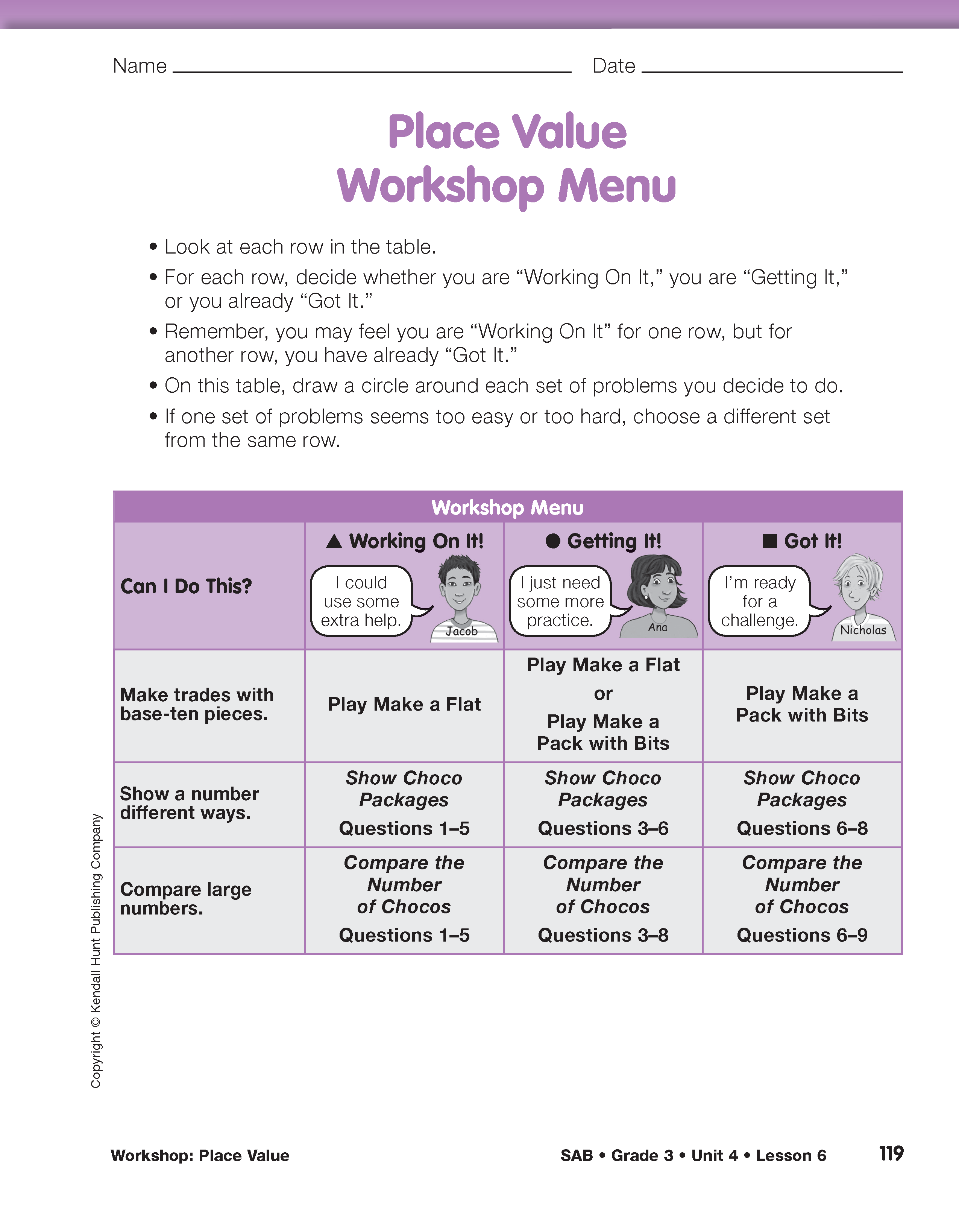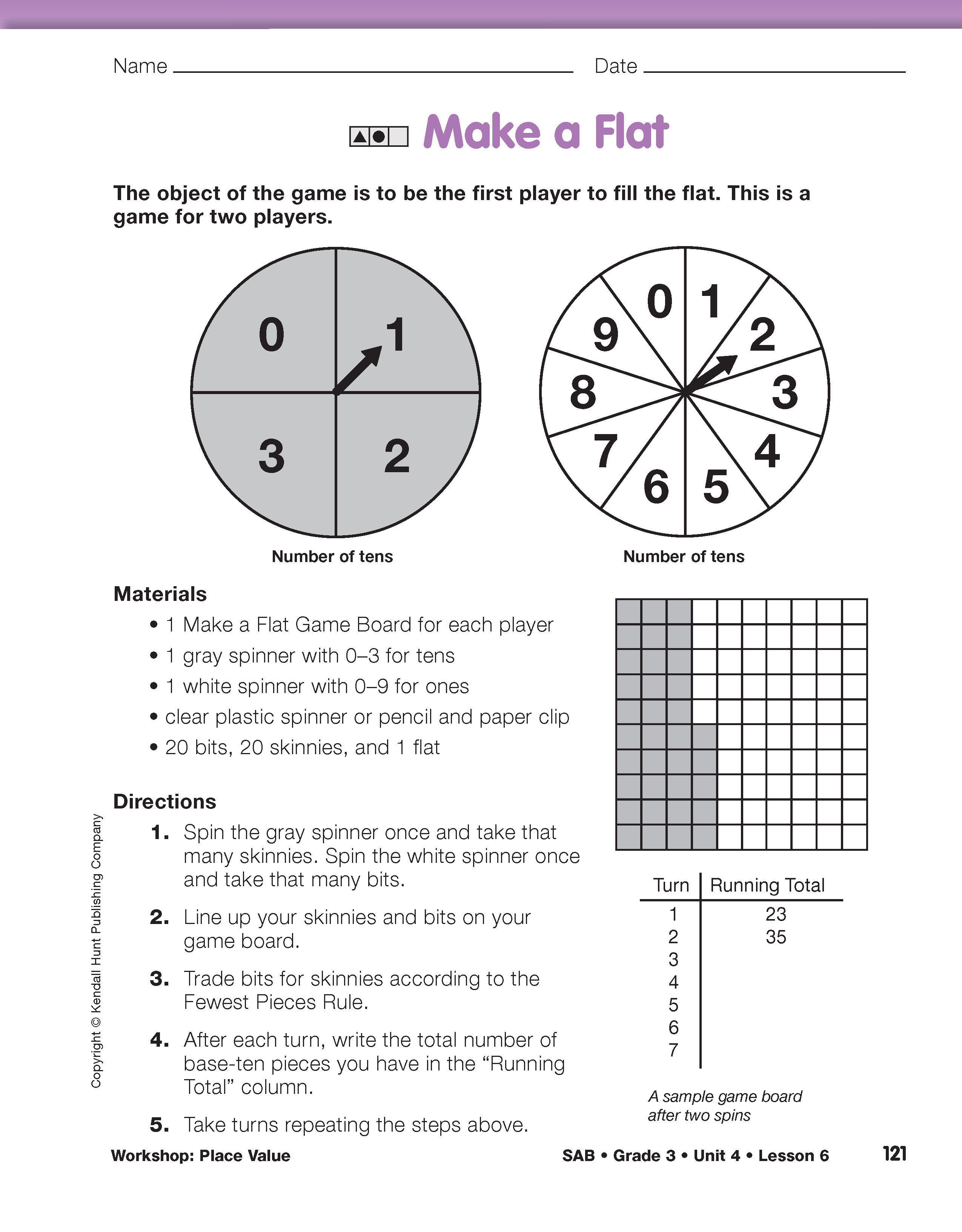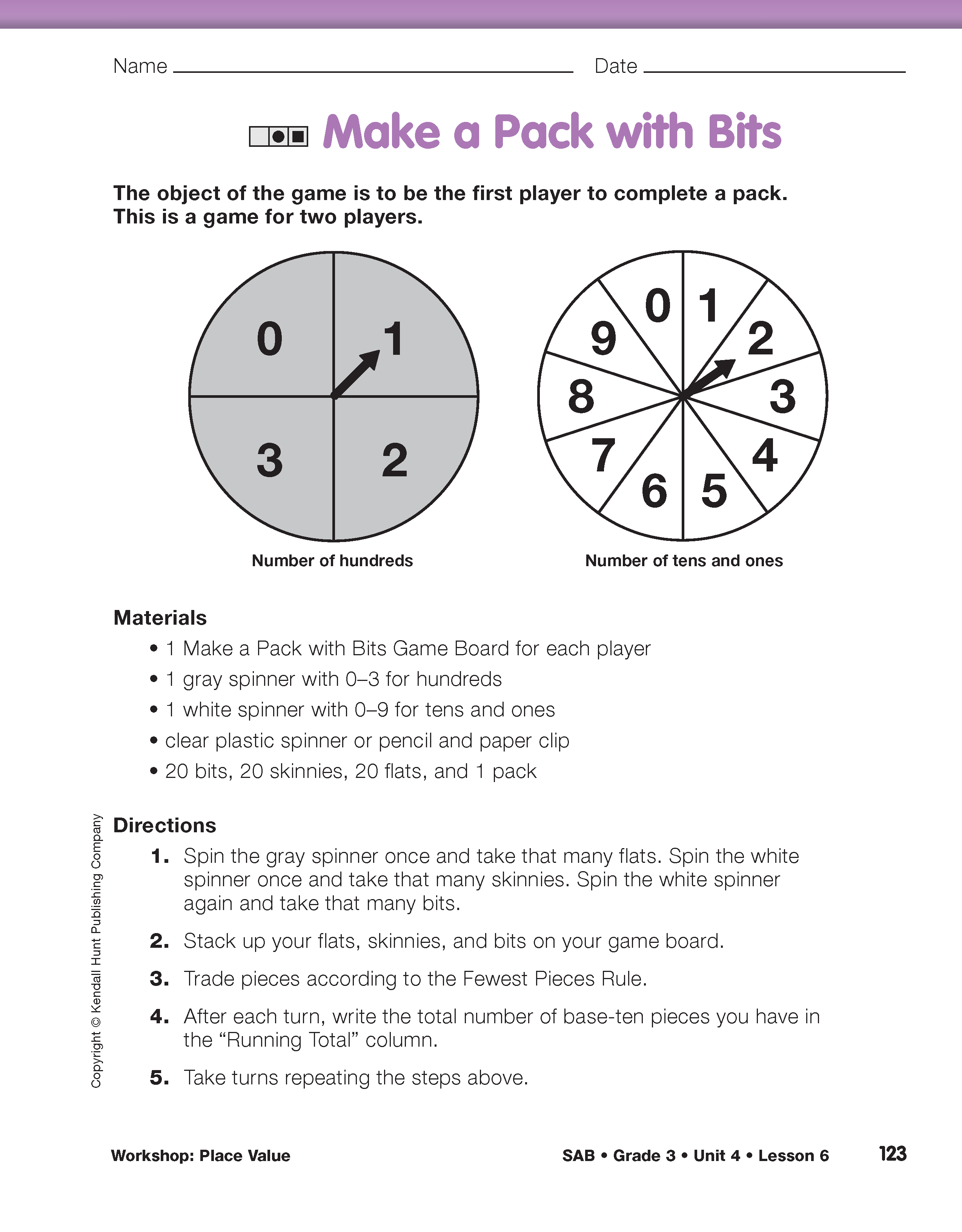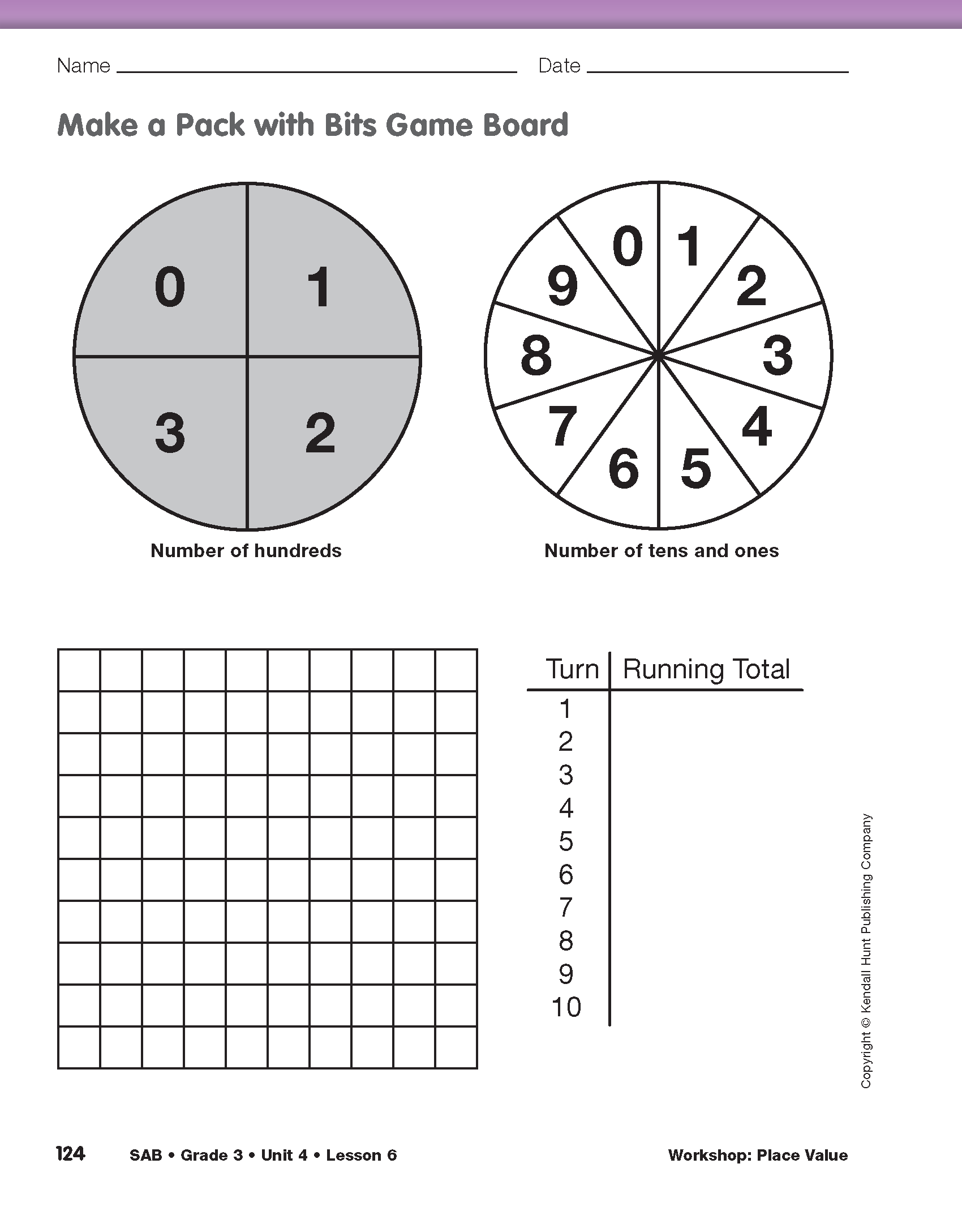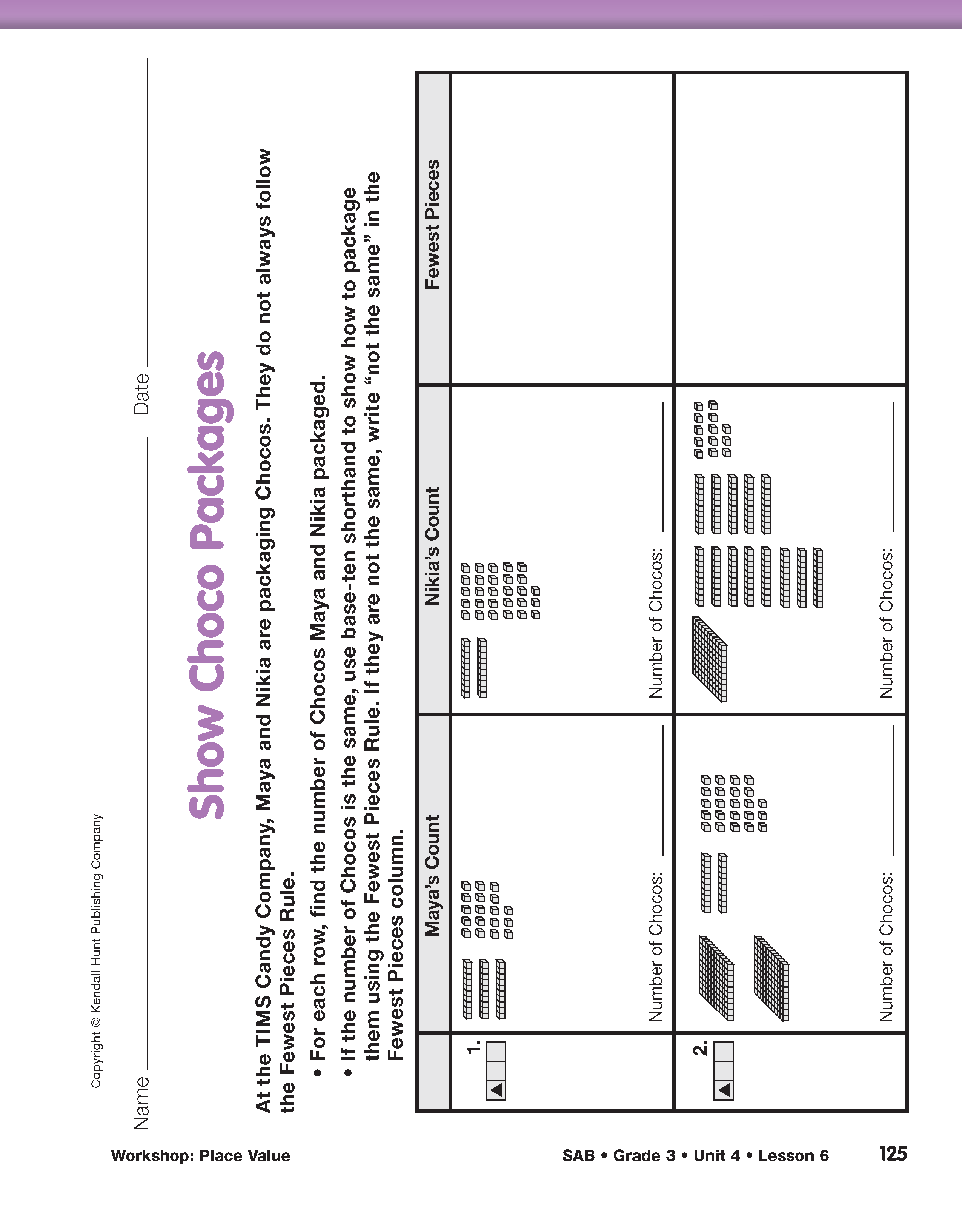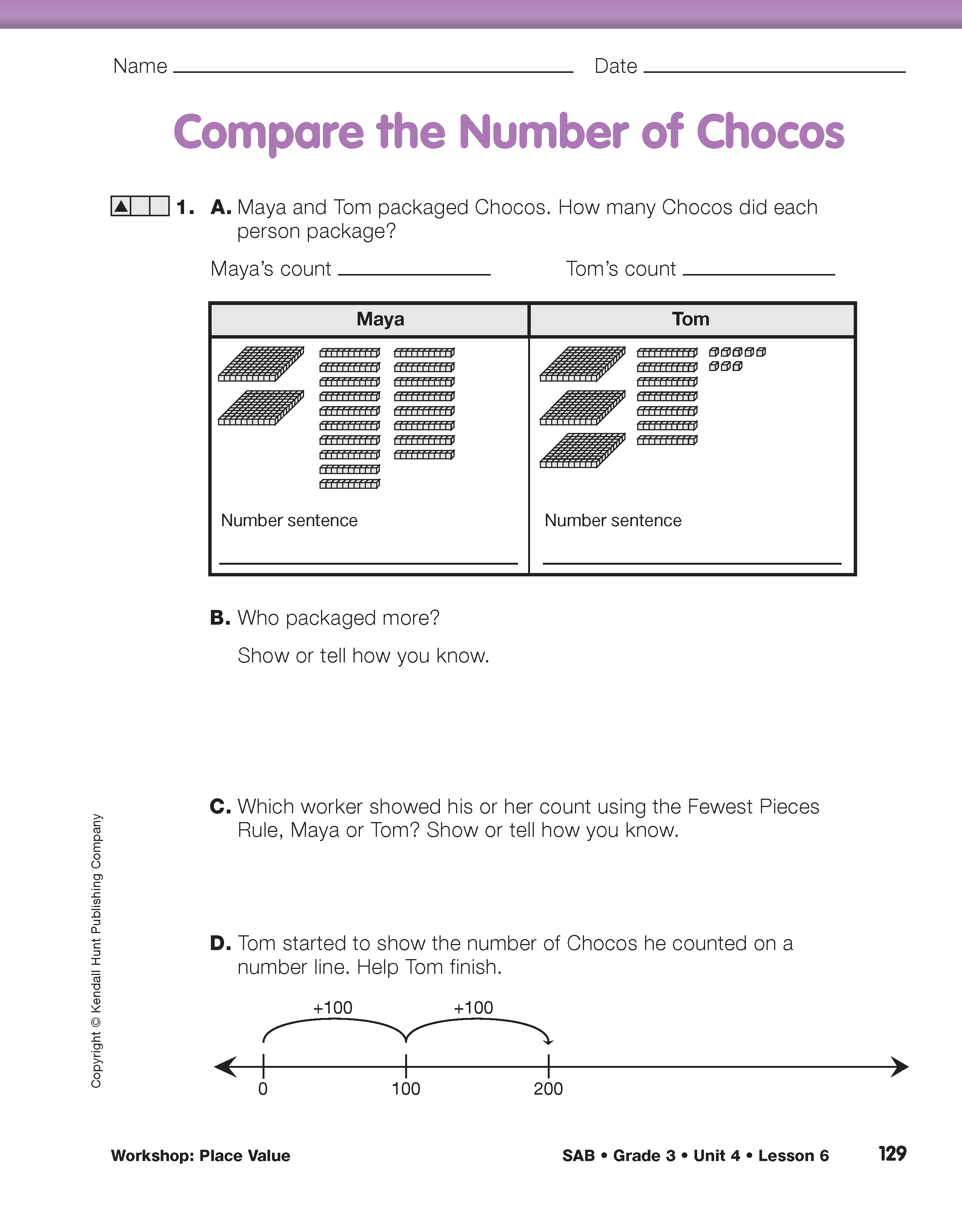Workshop: Place Value
Est. Class Sessions: 2–3Developing the Lesson
Self-Check and Organize for Workshop. Introduce the scenario in the Self-Check Question on the Workshop: Place Value pages in the Student Guide. Ask students to discuss and answer Self-Check: Question 1. Discuss each part of the question with the whole class, using a display of the the Workshop: Place Value pages. Ask students to share their solutions and explain their reasoning. Facilitate a class discussion of students' solutions.
Next, have students think about the “Can I Do This?” questions in the left-hand column of the Place Value Workshop Menu in the Student Activity Book. Ask students to review their work on the Self-Check Question to decide which problems to choose from the following groups:
- Students who are “working on it” and need some extra help should circle the problem set marked with a triangle (
 ). These problems provide scaffolded support for developing the essential underlying concepts as well as some opportunities for practice.
). These problems provide scaffolded support for developing the essential underlying concepts as well as some opportunities for practice. - Students who are “getting it” and just need more practice should circle the problem set marked with a circle (
 ). These problems mainly provide opportunities to practice with some concept reinforcement and some opportunities for extension.
). These problems mainly provide opportunities to practice with some concept reinforcement and some opportunities for extension. - Students who have “got it” and are ready for a challenge or extension should circle problems marked with a square (
 ). These problems provide some practice and then move into opportunities for extension.
). These problems provide some practice and then move into opportunities for extension.
Check students' choices to see how well they match your own assessment of their progress on the related Expectation(s). Help students make selections that will provide the kind of practice they need.
Play Make a Flat or Make a Pack with Bits. Based on choices students made on the Place Value Workshop Menu page, organize students to play either Make a Flat or Make a Pack with Bits. Review the rules and procedures for Make a Flat. Students played this game in Lesson 2. New game boards and directions are in the Student Activity Book. Make a Pack with Bits is a new game that is very similar to Make a Flat. Directions are on the Make a Pack with Bits page in the Student Activity Book. Students will need the Make a Pack with Bits Game Board section from the Student Activity Book to play. After distributing appropriate materials, give pairs a set number of rounds to play.
Show a Number. Match groups of students who have chosen similar sets of problems from the “Show a number different ways” row on the Workshop Menu. Problem sets for this Expectation are on the Show Choco Packages pages in the Student Activity Book. (Minis of the student pages are in the Answer Key.) Have students work with their groups to solve the problems they choose. Again, flexibility is important. If problems seem either too easy or difficult for students, they should adjust their choices from the menu.
Compare Large Numbers. Match groups of students who have chosen similar sets of problems from the “Compare large numbers” row on the Workshop Menu. Problem sets for this Expectation are on the Compare the Number of Chocos pages in the Student Activity Book. (Minis of the student pages are in the Answer Key.) Have students work with their groups to solve the problems they choose.















